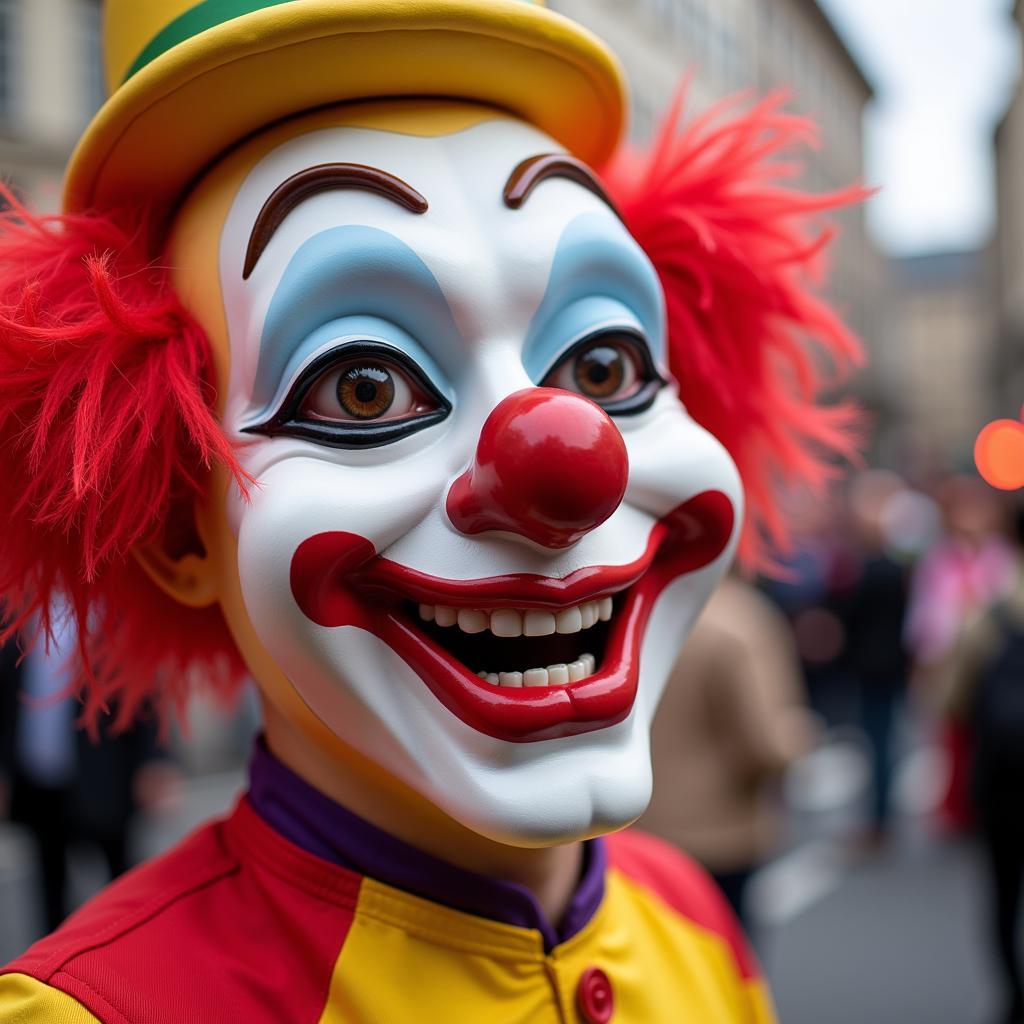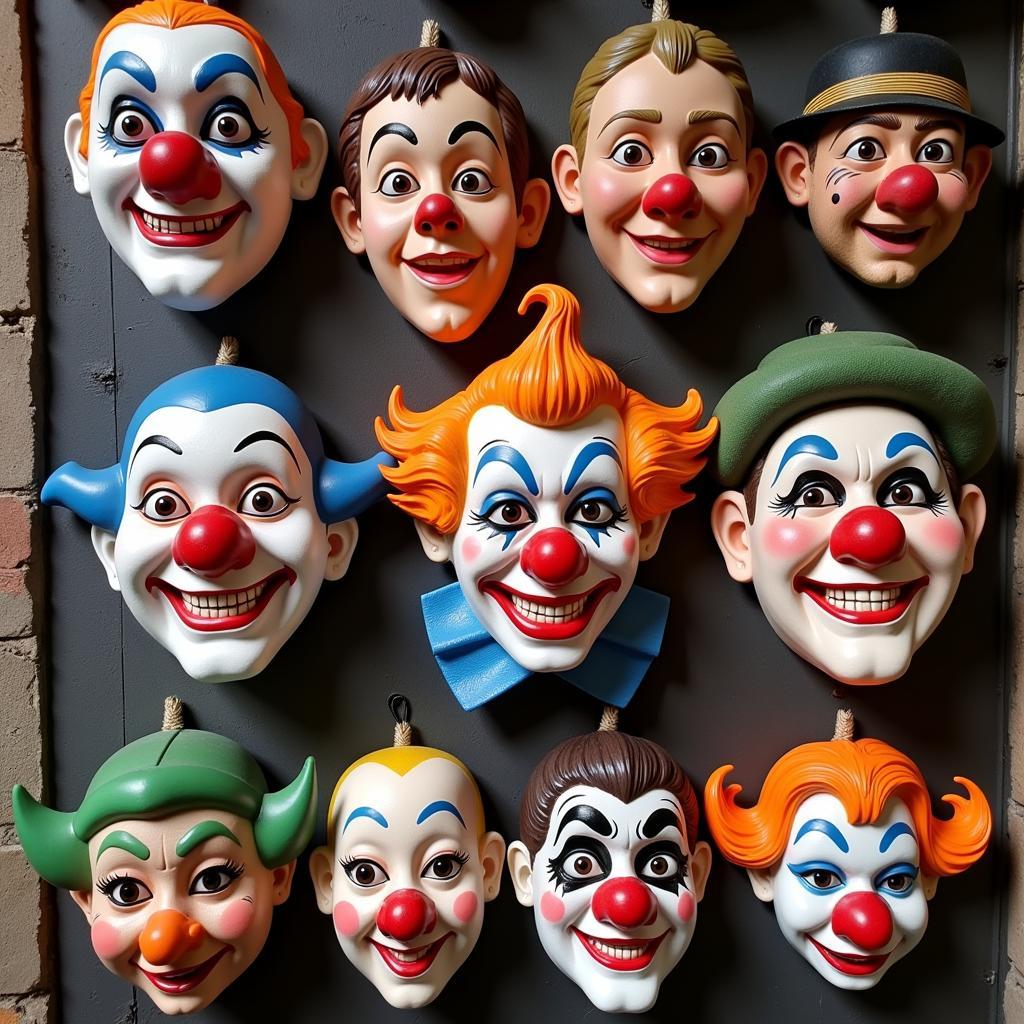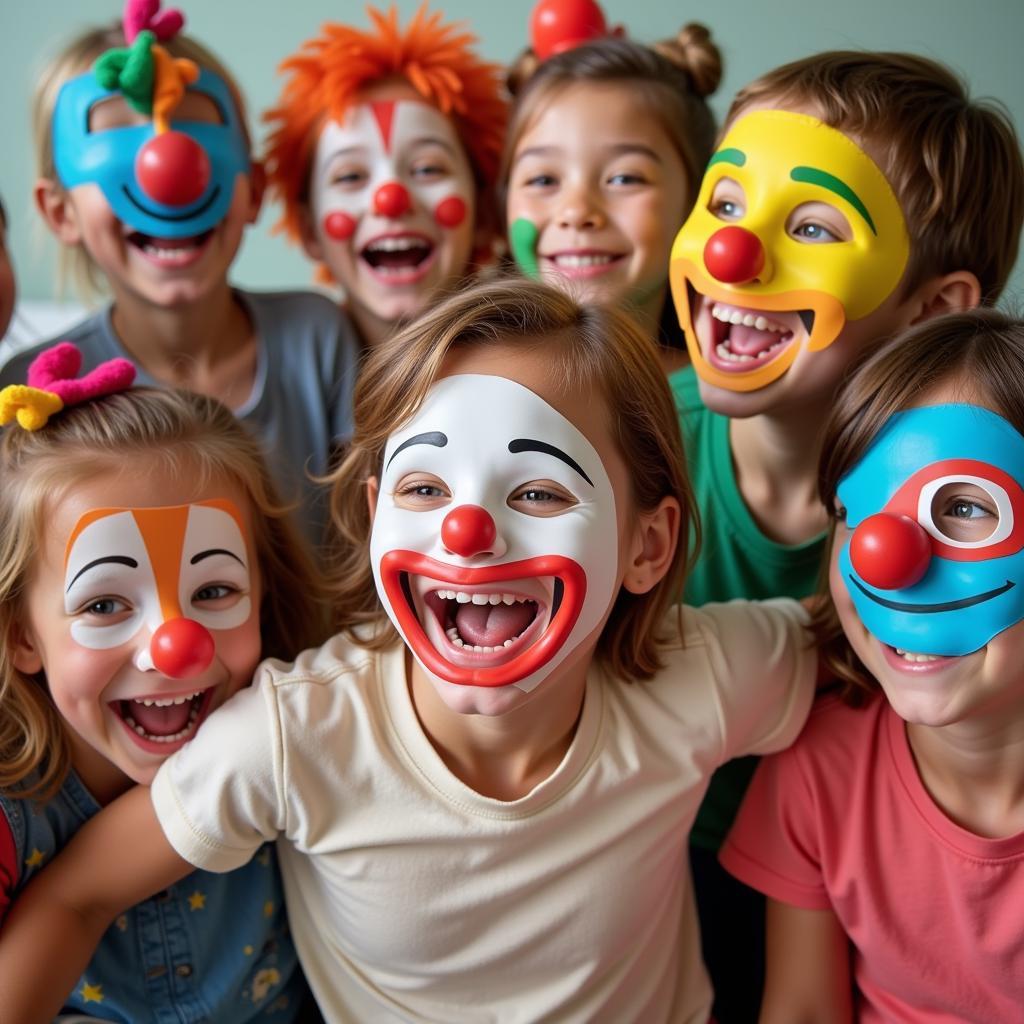The Happy Clown Mask, a symbol often associated with joy and laughter, holds a curious place in our collective consciousness.  Smiling clown mask at a parade But what is it about this simple visage that continues to fascinate and intrigue us? Let’s delve into the world of the happy clown mask, exploring its history, symbolism, and enduring appeal.
Smiling clown mask at a parade But what is it about this simple visage that continues to fascinate and intrigue us? Let’s delve into the world of the happy clown mask, exploring its history, symbolism, and enduring appeal.
A Smile That Hides a Thousand Emotions: Deconstructing the Happy Clown Mask
The happy clown mask, with its painted-on grin and rosy cheeks, is immediately recognizable. Yet, beneath its cheerful facade lies a complex history intertwined with theatricality, cultural traditions, and psychological intrigue. The exaggerated features, while intended to convey amusement, can also evoke a sense of unease in some, a phenomenon known as coulrophobia, the fear of clowns. This duality, the juxtaposition of joy and fear, adds another layer to the mystique of the happy clown mask.
From Ancient Rituals to Modern Entertainment: Tracing the Evolution of the Happy Clown Mask
The origins of the happy clown mask can be traced back centuries. Ancient civilizations incorporated masked figures into rituals and performances, often representing archetypal characters embodying humor and mischief. In ancient Greece, for instance, comedic actors wore masks with exaggerated expressions to entertain audiences during theatrical productions. The use of masks allowed for the amplification of emotions, making the characters’ feelings easily discernible from a distance.  Collection of Commedia dell'Arte masks
Collection of Commedia dell'Arte masks
Fast forward to the Renaissance period, and we encounter the Commedia dell’Arte, a form of Italian street theatre that heavily relied on masks to portray its cast of stock characters. The happy clown, or Zanni, was a prominent figure in these performances, bringing laughter with his slapstick antics and witty banter.
Beyond the Stage: The Happy Clown Mask in Popular Culture
The happy clown mask’s influence extends far beyond the confines of traditional theatre. In the 20th century, it found its way into popular culture, appearing in films, literature, and even political cartoons. From the iconic Joker in Batman comics, whose grotesque grin became synonymous with chaos and madness, to the playful Ronald McDonald, a mascot designed to evoke feelings of happiness and nostalgia, the happy clown mask has been reinterpreted and reimagined in countless ways, reflecting the evolving perspectives of society.
The Psychology of a Smile: Why Are We Drawn to the Happy Clown Mask?
The enduring appeal of the happy clown mask lies in its ability to tap into our primal instincts and emotions. Our brains are hardwired to recognize and respond to faces, and a smiling face, even one frozen in a mask, triggers a release of endorphins, creating a sense of pleasure and well-being.  Children wearing brightly coloured clown masks Moreover, the happy clown mask offers a sense of escapism, allowing us to momentarily shed our inhibitions and embrace the absurdity and joy it represents.
Children wearing brightly coloured clown masks Moreover, the happy clown mask offers a sense of escapism, allowing us to momentarily shed our inhibitions and embrace the absurdity and joy it represents.
Conclusion: The Happy Clown Mask – A Legacy of Laughter and Intrigue
The happy clown mask, a seemingly simple object, holds a fascinating and complex history. Its journey through time, from ancient rituals to modern entertainment, speaks volumes about our enduring fascination with laughter, disguise, and the masks we wear, both literally and figuratively. Whether it evokes joy or unease, the happy clown mask remains a potent symbol, reminding us of the power of masks to conceal and reveal, to entertain and provoke.





